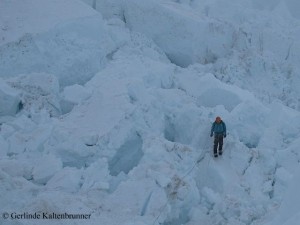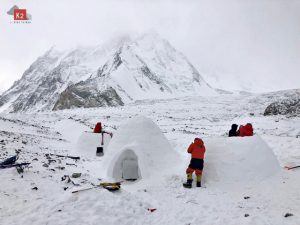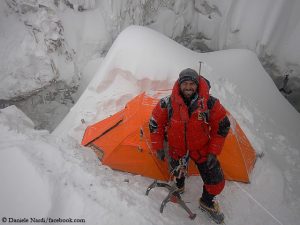Death trap Khumbu Icefall
The very first climbers had respect for the Khumbu Icefall. This is underlined by the nicknames which the members of the successful British Everest expedition 1953 gave to the risky passages through the labyrinth of ice: “Hillary’s Horror”, “Mike’s Horror”, “Atom Bomb area”. The icefall was “the key to all attempts on the south side of Everest”, wrote Sir Edmund Hillary, the New Zealander, who, together with Sherpa Tenzing Norgay, stood first on the 8850-meter-high summit. Since then about 40 climbers, most of them Sherpas, were killed in the Khumbu Icefall by avalanches from the west shoulder or collapsing seracs. In recent years, high temperatures have even increased the danger of avalanches. For this reason, the New Zealand expedition organizer Russell Brice had abandoned his expedition in 2012.
No hope for missing climbers
The disaster on Friday was the worst in the history of Mount Everest. By now 13 dead bodies have been recovered from the ice and snow. There was no more hope to find the three still missing climbers alive, said a spokesman of the Ministry of Tourism. All victims are Nepalis, most belonged to the ethnic group of Sherpas. They all were carrying material and food from basecamp to the camp above the icefall, when they were hit by the ice avalanche. They had no chance to escape.
Double tragedy
The families of the victims are hit twice. They have not only lost a relative but also a breadwinner. Porters on Mount Everest can earn about US $ 5,000 in a season. The average income in Nepal is only $ 692, thus it remains one of 20 poorest countries in the world. The Nepalese government has announced a relief of 40,000 rupees (about $ 400) for the families of the avalanche victims. This is hardly more than a drop in the ocean.
The expedition organizers are obliged to insure their Nepalese staff. Last summer, the government in Kathmandu had decided to almost double the mountaineering workers’ insurance at the beginning of 2014. Now in case of death the families of Sirdars (head of the local team staff), mountain guides and high altitude workers who are climbing higher than base camp are given one million rupees (about $ 10,000), the families of basecamp staff 500,000 rupees (about $ 5,000). The American Alpine Club has established a Sherpa Support Fund for the families of the Everest avalanche victims.








